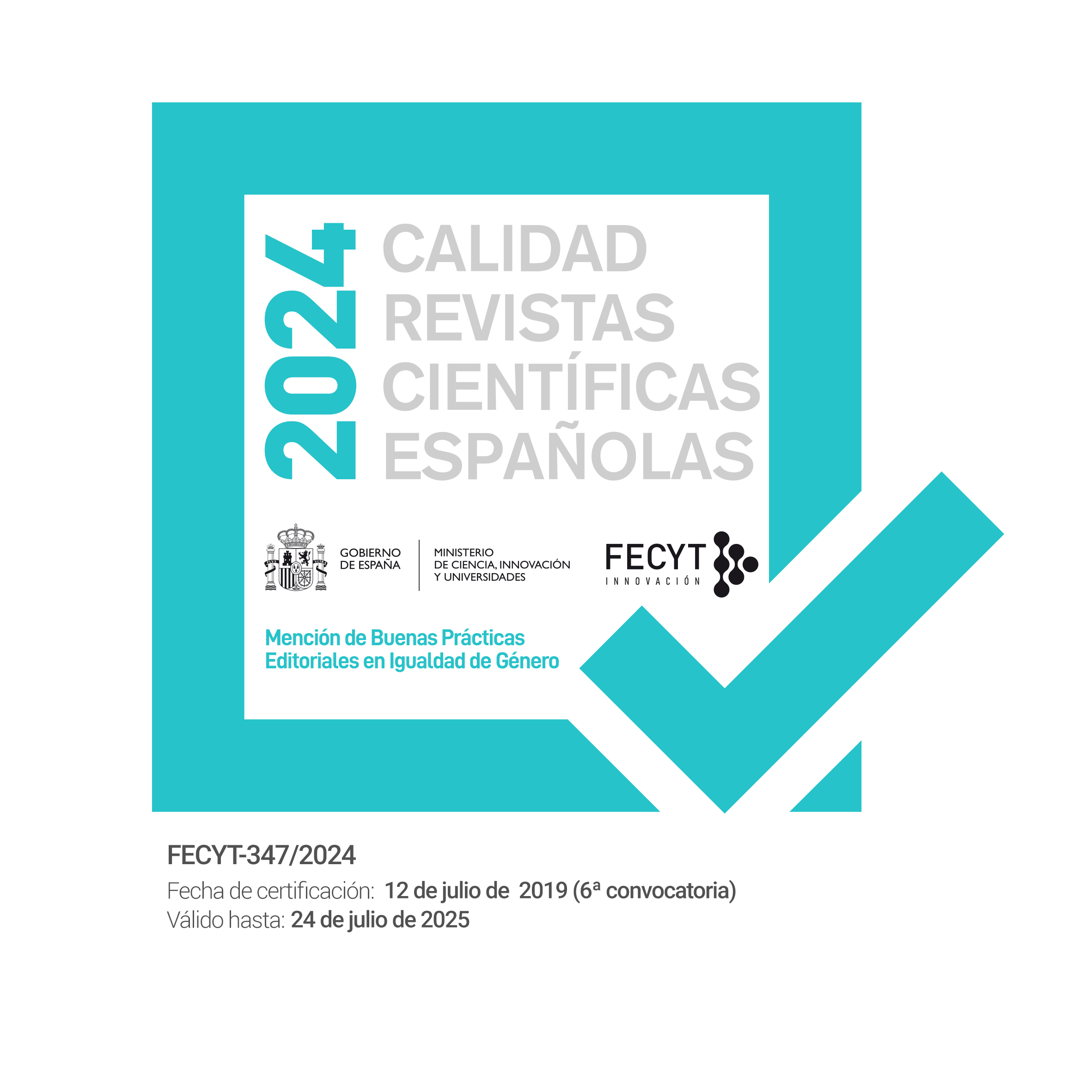La internacionalización del arte abstracto español : el intercambio de exposiciones con los Estados Unidos (1950-1964)
DOI:
https://doi.org/10.5944/etfvii.16.2003.2412Resumen
A comienzos de la década de los cincuenta, el régimen franquista luchaba por hacerse un hueco en el panorama internacional fuera del aislamiento al que había sido sometido tras el final de la Guerra Civil. Comenzaron a aparecer las primeras muestras de aceptación e incluso de promoción del arte de vanguardia desde las instancias oficiales, que también promovieron la organización de exposiciones que dieran a conocer poco a poco en España el arte que se hacía fuera. Tras una primera exposición de grabados abstractos, la exposición «El Arte Moderno en los EE. UU.» dio a conocer el arte norteamericano en Madrid y Barcelona en 1955. Tres años más tarde tendría lugar en el Museo Nacional de Arte Contemporáneo de Madrid la muestra «La Nueva Pintura Americana», compuesta de nuevo por una selección de obras de la colección del MOMA de Nueva York. Esta exposición coincidió con el momento de mayor auge del informalismo español gracias a los éxitos conseguidos en la Bienal de Venecia de 1958. Tras largos años de aislamiento e indiferencia hacia el arte que España presentaba en sus exposiciones oficiales en el exterior, la crítica internacional reconocía el pabellón español como el mejor de la Bienal. La política cultural que entonces emprendió el régimen franquista en el exterior llegó a su culmen en 1960 con la exhibición simultánea de dos exposiciones de informalismo español en Nueva York: «Before Picasso, after Miró» en el Guggenheim Museum y «New Spanish Painting and Sculpture» en el MOMA.
At the start of the fifties, the Franco regime fought for a place at the international panorama out of the isolation that Spain had after its Civil War. It became to appear signs of acceptance and even a promotion of the avantgarde art from the official policies, that also promote the organization ofseveral exhibitions in Spain that slowly began to show the art done abroad, with was completely unknown. After a first exhibition of abstract etchings, the show «Modern Art in the United States» was displayed in Madrid and Barcelona in 1955. Three years after the National Museum of Contemporary Art in Madrid held the exhibition «The New American Painting», composed by a selection of works from the collection of the Museum of Modern Art (New York). This exhibition was held at the moment of the big success the spanish informaiism was having after the two prizes reached at the Venice Biennale in 1958. After long years of isolation and indifference to the art that Spain presented in its official exhibitions abroad, the international critics finally considered the spaniard as the best pavillion of the Biennale. The cultural policy that the dictatorship started out abroad carne to its highest point in 1960 with the celebration at the same time of this two exhibitions in New York: «Before Picasso, after Miró» at tíie Guggenheim Museum and «New Spanish Painting and at the Museum of Modern Art.
Descargas
Descargas
Publicado
Cómo citar
Número
Sección
Licencia
Los autores que publican en esta revista están de acuerdo con los siguientes términos:
- Los autores conservan los derechos de autor (copyright) de las obras publicadas y garantizan a la revista el derecho de ser la primera publicación del trabajo al igual que permiten la reutilización del mismo bajo la licencia de uso indicada en el punto 2.
- Las obras se publican en la edición electrónica de la revista bajo bajo una licencia Creative Commons Reconocimiento-NoComercial 4.0 Internacional, que permite a otros compartir el trabajo con un reconocimiento de la autoría del trabajo y de la publicación inicial en esta revista. Se pueden copiar, usar, difundir, transmitir y exponer públicamente, siempre que: i) se cite la autoría y la fuente original de su publicación (revista, editorial y URL de la obra); ii) no se usen para fines comerciales.
- Se permite y se anima a los autores a difundir electrónicamente las versiones pre-print (versión antes de ser evaluada) y/o post-print (versión evaluada y aceptada para su publicación) de sus obras antes de su publicación, ya que favorece su circulación y difusión más temprana y con ello un posible aumento en su citación y alcance entre la comunidad académica (por ejemplo, en repositorios institucionales o en su propio sitio web). Color RoMEO: verde. (Véase The Effect of Open Access) (en inglés).







